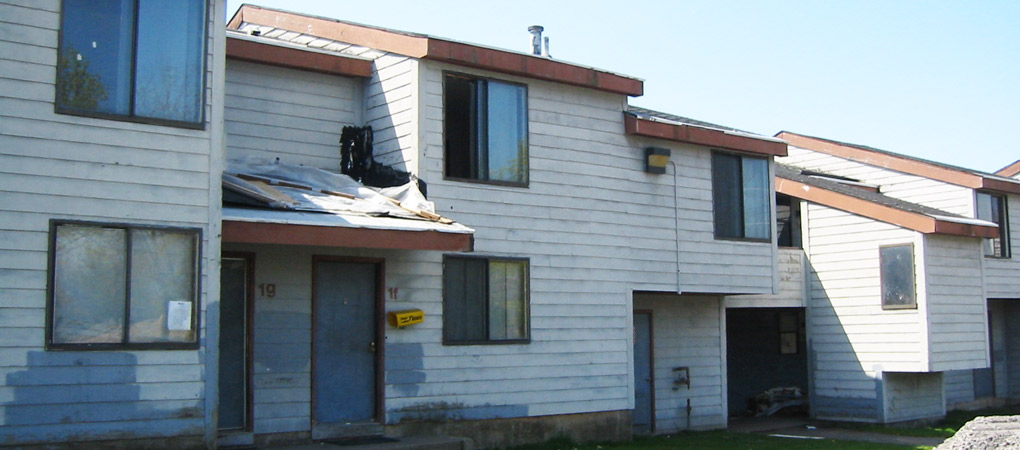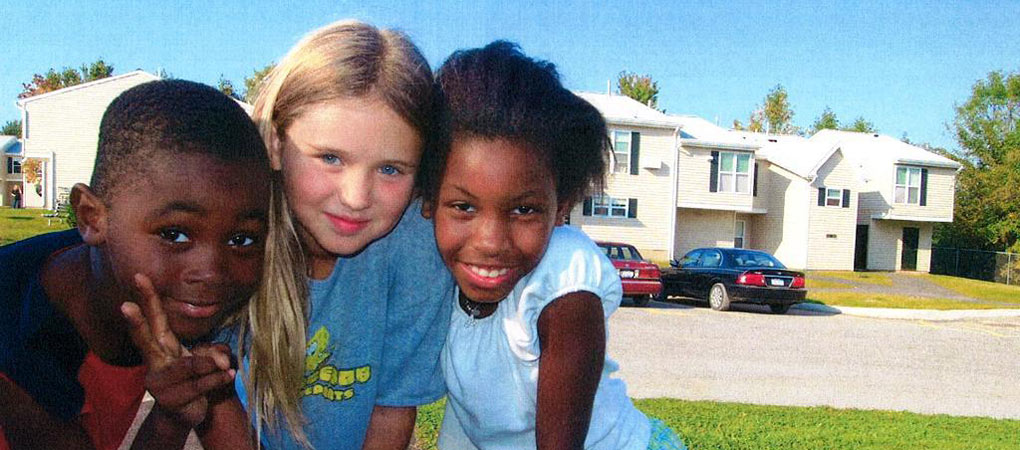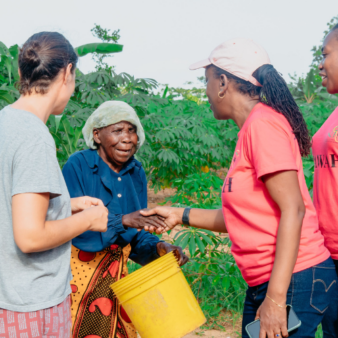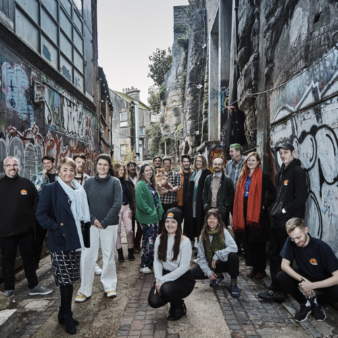With guidance from low-income communities, Rural Opportunities, Inc. develops and operates programs that empower low-income rural families throughout six states and Puerto Rico, promoting the responsible development of the communities in which they live. The Windy Hill Apartments located in New York State involved the redevelopment of a foreclosed, blighted apartment complex in the village of Clyde, providing affordable rental housing for 30 families earning below 60 per cent of the area median income.
Project Description
Aims and Objectives
To provide affordable rental housing with support services for low-income families whilst transforming previously neglected buildings into a positive part of the local community. The main groups benefiting from the project are 30 low-income rural families and the Village of Clyde.
Windy Hill Apartments was created out of the rubble of a failed existing apartment complex known as Highland Apartments, located in the village of Clyde in Wayne County, New York State. Highland Apartments had been abandoned by the owners and managers shortly after it was built in the 1970s and quickly fell into disrepair, becoming a haven for criminal activity and a danger to the surrounding community. By the 1990s only a few families remained, living in extremely unsafe conditions. New York State took the building back in foreclosure proceedings, taking ownership of the property and inviting offers for its renovation.
Rural Opportunities, Inc (ROI) took on the apartments and renovated them, configuring some of the apartments into larger units to provide more family accommodation and thus address the present needs of the community. The previous unit mix of 50 small rental units in seven deteriorated two-story wood frame buildings was reconfigured and a complete renovation has been carried out. Two of the existing buildings were demolished and the other buildings were refurbished to create 30 family units, including four 1-bedroom apartments, six 3-bedroom apartments and twenty 2-bedroom apartments.

The renovation consisted of the replacement of entry and interior doors, heating systems, windows, finishes, exterior finishes, paving, landscaping and site lighting. One of the original buildings was converted from housing units to an on-site management office, maintenance storage and operations room, tenant storage area and a community space where residents can congregate, share meals and participate in resident service programs. Property management and support services are provided and a playground was created on-site for the use of children residing in the completed development.
The total cost of the development was approximately US$3.3 million, drawn from a range of public and private funds. Rents are affordable to households earning below 60 per cent of the area median income. Most residents’ income levels are classified as poverty level (30 per cent of median income), or as very low (50 per cent of median income). Eighty per cent of the households receive a rental subsidy. A Homebuyer Education Program also helps families to move into owner occupation and it is planned to build three new single-family homes on the site, allowing qualifying first-time homebuyers the opportunity to purchase brand new houses.
Funding for the project was obtained from a wide range of sources, including the United States Department of Housing and Urban Development (HUD); New York State Urban Development Corp.; New York State Division of Community Renewal; the local Public Housing Authority (Newark Housing Authority); the project construction leader, a non-profit national intermediary (Local Initiative Support Corp.) and its non-profit affiliate equity provider (National Equity Fund); Neighbourhood Reinvestment and a private not-for-profit foundation, the Federal Home Loan Bank of New York, through its member bank HSBC USA.
Current funding for the project is provided by residents’ rents with subsidies from the federal Department of Housing and Urban Development, the state Division of Housing and Community Renewal and the Newark Housing Authority.
A Limited Liability Company (LLC) has been set up as the equitable owner (designated to receive the property held in trust) of the improvements of the project. It has a 99-year lease on the real estate. Members of the LLC consist of a Limited Liability Partner, owning 99.99 per cent and providing equity in exchange for the benefit of low income tax credits, and the managing member, the Rural Housing Opportunities Development Company which owns 0.01 per cent and is responsible for the redevelopment responsibilities as well as the day-to-day operations. At the end of the 15-year tax credit period the managing member will take over 100 per cent ownership of the project.
A Local Advisory Board, consisting of community members, the project development team and the remaining residents of the Highland Apartments, was established early in the redevelopment of the project to address the concerns of village residents. This Board assisted with planning and design issues. It works closely with the property management staff to address any concerns the community may have with the property. On-going management and maintenance is provided by an ROI on-site project management team and local residents.
The project has had a tremendous impact on the quality of life of the residents, who now have access to decent, affordable housing and a safe space for their children to play. Resident Sylvia Drayton states, ‘The residents love it. It will be maintained because we want it to stay nice’.
The project has been positive for the community as a whole. US$380,000 in grant funding has now been secured for street improvements in the area, including paving, drainage, sewers and sidewalks.
The structure used to acquire and redevelop this project is now used as a model for other similar projects in the State of New York.
Why is it innovative?
- Adaptive re-use of an existing, dilapidated housing complex.
- Community involvement in the planning, design and management of the project.
- Provision of a resident support services program.
- Link to home buyer education and possibility for single-family home purchase on the same site.
What is the environmental impact?
Rather than demolishing the dilapidated buildings, ROI chose to rehabilitate the existing structures, making use of available physical assets.
The project has replaced the unsafe or non-functioning electrical, plumbing and heating systems in the buildings. Utilities previously belonging to the project owners are now owned by the utility company providing services.
The project replaced the existing flooring and roofing, which was found to contain asbestos, an environmental and health hazard.
Is it financially sustainable?
The provision of tax credits ensure that investors will only be benefited by long-term care of the properties. A long-term account has been set up, whereby a portion of rents collected is set aside for the eventual day when ROI takes full possession of the buildings, when all the tax credits are used up. The rent subsidies and maintenance will then continue indefinitely. A total of US$103,000 – a combination of ROI funds and rents/rent subsidies – has been set aside in an interest-bearing account.
In an effort to provide economic opportunities to the local community, local businesses and local low-income community residents were solicited for employment in the project redevelopment. Some of the residents of Windy Hill were employed at the project during the construction phase. One resident is presently the site superintendent for the project. He is an employee of ROI and is given the use of a two-bedroom apartment on the site.
Rents are established based upon income and rent subsidies are available. The apartments are affordable to households with incomes up to 60 per cent of median income. With financial help from the federal Department of Housing and Urban Development, the state Division of Housing and Community Renewal and the Newark Housing Authority, rents are no greater than 30 per cent of a tenant’s gross monthly income. If tenants fall upon hard times, ROI works through these times with them. ROI personnel also help residents through the maze of government programs available.
What is the social impact?
The new apartment complex has a Resident Services Coordinator, who helps link the low-income residents to community services and organises educational, recreational and social activities for both adults and children in the community. One of the new apartments has been converted into a community space where residents can meet, share meals and participate in resident service programs. According to residents, a strong sense of community has been established as a result of the project.
Residents are given the opportunity to participate in ROI’s Home Buyer Education Program, which can prepare them to move into homeownership as they are able and interested.
Prior to the project, the Highland Apartments had broken windows and doors, holes in the walls, broken plumbing fixtures and unsafe electrical and heating systems. Residents, including families with young children, endured terrible housing conditions that posed a threat to their health and safety. The project has transformed the buildings and provided safe accommodation for its residents.
Middle-income residents from the wider community, many of whom initially opposed the idea of providing affordable housing for low-income families in their neighbourhood, have stated that the Windy Hill project ‘fits in well with the rest of the community’ . Their attitudes have changed from being adversarial, to becoming one of the project’s biggest advocates, opening their arms to Windy Hill families.
Participation on the Local Advisory Board has empowered the residents to play an active role in the decision-making process and has effectively bridged the gap between the project residents and the wider community, bringing both into closer communication and understanding. The size and remit of the Board is currently being expanded to a village-wide focus to address other problems and concerns throughout the area.
Barriers
The local community was extremely fearful due to the neglect and negative impact of the original Highland Apartments project. The opposition to the redevelopment was strong and felt by all community members including most local government officials. In an effort to ease concerns, ROI set up an advisory committee to develop a plan that not only worked for the project but also supported the community’s long-term goals.
There were many public agencies involved with the original buildings and in the redevelopment plan of this project. The ROI team had to understand each agency’s regulations and guidelines and work together to overcome conflicting regulations and agency limitations for the ultimate goal of improving the quality of life for those occupying the affordable housing.
Lessons Learned
The problems addressed by ROI with this project are commonly found in rural areas of the USA and the project is one of many experiencing similar physical, social and economic conditions (physical deterioration, local community resistance, financing structures, etc). This project has developed a vehicle for acquisition and redevelopment, which satisfies all the regulations of each governmental agency involved in the project and yet does not compromise the long-term sustainability of the project, from both a development and operational point of view. There is strong potential for transfer of the approach.
Evaluation
The project is funded by a number of organisations, each of which has its own monitoring requirements. Each funding agency requires a regular site visit, written reports and files for each resident.
Transfer
Three low-income, single-family homes will be added to the Windy Hill site over the next several years as families complete Home Buyer Education and are ready to own their own new home. In addition to the Highland Apartments, Rural Opportunities has purchased the Riverside Apartments in the nearby village of Lyons. With the help of the village and its fire department, the Riverside buildings have been demolished and are ready for development.
Other foreclosed properties owned by New York State are in the process of being redeveloped following the lead of the Windy Hill Project.
Partnership
Private, Local Community



